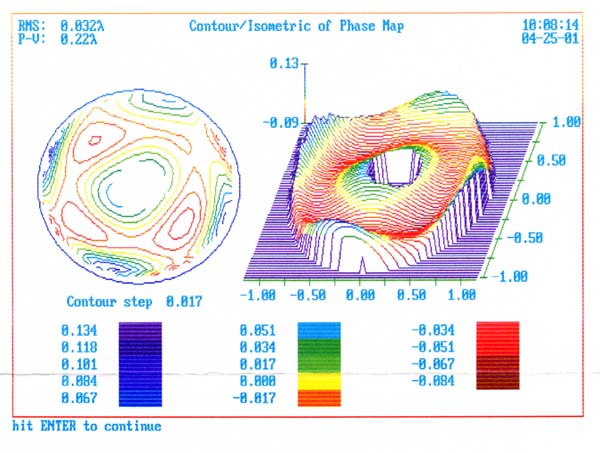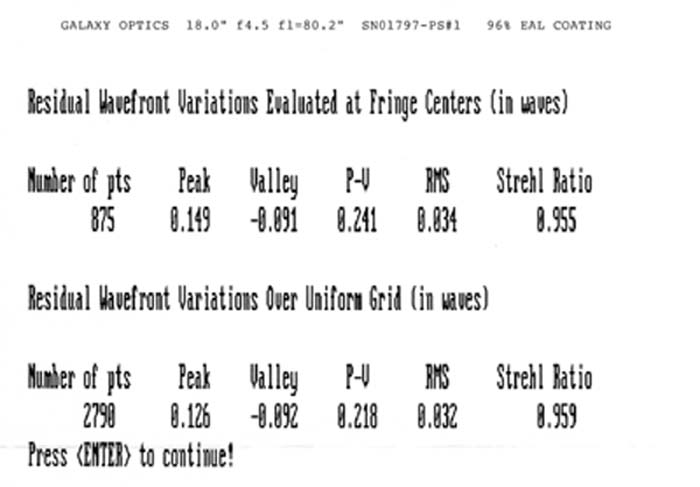A wood bar suspending from the top ring is used to move the telescope down ward: I grab it and push down when I sweep the sky vertically. The light shroud was renewed in 2010: the present shroud was made by AstroSystems, Colorado, USA.The light shield is attached over the eyepiece.
A piggyback ride Regal Quick-Finder on a 50 mm right erect finder, and a digital setting circles, Nexsus DSC. The eyepiece, I usually use for comet hunting, is Ethos 21 mm with 97x and 1.0˚ actual field of view (FOV). A light shield is placed over a white plastic part on the eyepiece. Another eyepiece that I use is Planocular 30 mm, manufactured in Germany with 88˚ apparent FOV, which is combined with Parracor with 78x and 1.1 ˚ apparent FOV. Once I used Planocular 30 mm alone with 68x and 1.3 ˚ actual FOV. The dew shield made by insulator for water supply pipe (white colored) is placed on the Quick-Finder and the eyepiece of the 50 mm finder. Only when I peer into finders I remove the dew shields. A long dew shield hood is placed for the objective of 50 mm finder.
Center: Nexus DSC
Right: Rear view
The power line extends from the rocker box where the battery is placed to the secondary cage via the heater controller. There are two heaters; one is applied to the secondary mirror and another is to the eyepiece. Kendrick Dew Remover System is installed in the secondary mirror and can be attached on the eyepiece.
Multifunctional stepladder
Left: iPad mini 2 is placed on the stepladder using an attachment with flexible arm (not detached every session). LED lamp is fixed using Velcro and rubber string. Note that the clipboard is not vertical but inclined to avoid dew or frost condensation on the paper (not seen).
Right: Close-up of iPad mini 2. Red plastic cover is flipped.
Right: Rear view of a mirror cell. There is a cooling fan at the center. Two vertical wood blocks are to protect three light collimation knobs, when the mirror box is placed on the ground.
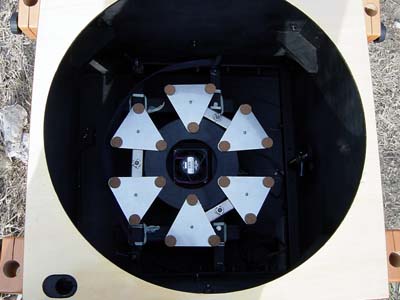 |
A primary mirror and trusses are removed. The photo was taken in 2003.
Top of this page
Assembling
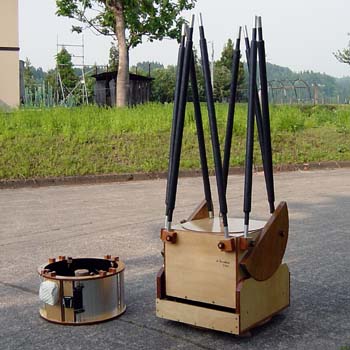 |
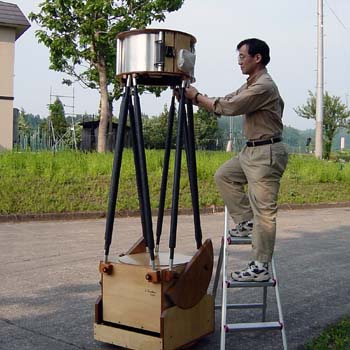 |
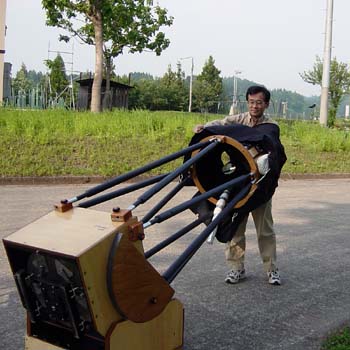 |
Center: Connecting truss poles and the secondary cage.
Right: Pulling on the light shroud. White counter weight, which is metal chain covered with white foam, is in the secondary cage. At this stage, it is bottom heavy. The counter weight is removed after the finders and other gears are installed on the secondary cage.
Photos were taken in 2003
 |
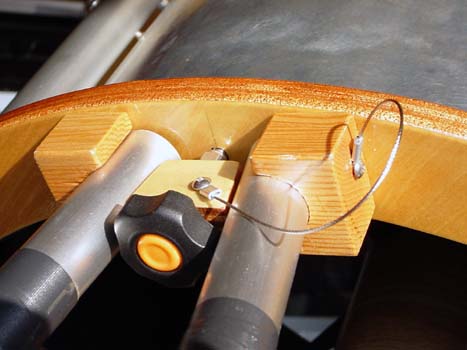 |
 |
|---|
Center: The wedge is screwed between a pair of poles.
Right: Inside view of the pole seats and wedge. Velcro is placed on the surface of the wedge and inside wall of the secondary cage.
Photos were taken in 2003
Top of this page
Takedown & loading
| |
1: primary mirror, 2: plastic bag with chuck, 3: silica gel in paper bag, 4: truss-tube poles, 5: cleaner to vacuum air in a plastic bag,
6: eyepiece boxes, 7: homemade PVC primary mirror cover, 8: ladder, 9: parts box, 10: plywood plate (lifted)
Center: Loaded mirror box
11: step for loading
Right: Completion of loading
12: clothes box, 13: white form for shock absorbing
| |
|
Right: My new car is Toyota NOAH. Even though the telescope occupies the third row seats, four persons can ride in total including a driver: two persons each on the first and the second row seats, respectively.
